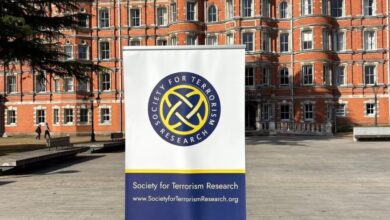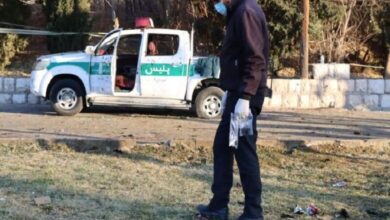Assassination of Scientists as an Apparent Example of “Crime against Humanity”
Introduction
Before getting into a discussion about the international law capabilities in dealing with the assassination of scientists, and its approach toward such actions, we have to make a notion that the prosecution of the some issueslike the scientistassassination of a certain country by agents of another, legally depends on some internal and external factors. When a crime is committed in a domain of a country, there would be some factors to forge the crime indicating what would be the real factors behind it. If the perpetrators are not known, security agents, judiciarysystem and police officers make their way into the case to shed light to the crimes elements based on the witnesses and documents concerned. On the other hand, if the crime is committed outside the country, the situation would be totally different and international institutions like international police should be abated. And finally if a crime is carried out within the territory of a state but outlined by outsiders and carried out by insiders, there would be the probability to actors to be arrested.
International bodies with a potential authority to deal with the assassination of scientists
In order to legally prosecutethe scientists’ assassinations, we have to consider the most available selection with which to make a claim.
1- The first way is toset the case before the UN. This organization is the only source that all states are members to. Therefore, prosecution through this organization on one hand has to do with publicity;on the other hand it enjoins an organ called “the Security Council”. The subject of the assassination of scientists has the capability of to be brought forth for discussion in UN general assembly as well as Security Council in such a way that ICCwill itself beauthorized to sue the case by the general assembly’s ‘order. Such a case has been adapted in the past through international judiciaryapproachby the Security Council. For example, the prosecution of president of Sudan on the crime of “Genocide” was issued by the request of Security Council which was finalized the ICC’criminal verdict on him. For this point, if he could be managed to enter into one of the UN’sterritories, they could be obliged to arrest and then delivered him to the ICC. According to article 13 of Rome Statute, Security Councilan incident may be referred to the ICC by the Security Council. In such a case, duo to the content of the article 13, the ICC and Security Council’sprocedure, there is no need for a state to be a party to the Statute. This is the path requiring a rigid work as to pave the ground to make a success since the members to the Security Council has the right to veto it in order to satisfy their own interest.
2- Making a complaint directly by governmental officials in ICC is another way to follow the case. But the fact that non-party states to the Statute do not enjoy the right to directlypursue the case through this entity, streamlines such cases for victimized countries to outline the right of such countries worldwide, and make a caution that such actions would jeopardize the peace and stability of the world and hence requiring a sustainable world’ justice and security which is the ICC and security council ‘duty. Serious violations of human rights in countries would lead to the destabilizing the peace and security of the world. So, such states (non-party states to the Statute) would be able to comply narrowly with the international criminal court’s jurisdiction as to sue the case pertaining to the scientific individual’ assassination.
3- Last but not least, is to sue the case before theinternational court of justice- the UN’s main judiciary organ. Some of these countries which are not parties to ICC are in return members to ICJ.
International instruments invoked for prosecution of scientists assassinations
The subject of legal nature of the scientists ‘ assassinationsof various countries by secret services goesback to both world war II and cold war.Some of Western authorities try to justify the “TargetedKilling” taken place in different places as not amounting the “State Terrorism”. While the comparison between the latest assassination of other nation’s intellectuals including Iran, Iraq and Syria with the provisions of international treaties on terrorism proves to the contrary. One of the important items is theInternational Convention forSuppuration the Terrorist Bombings enjoying 168 countries. Among the signatures the name of United Statescatches the eyes.
The assassination of scientists not only included in International Convention for the Suppuration of Terrorist Bombings and regarded as terrorist action as to defined in the convention, but is not paralleled to the condition of the” targeted killing”(4) since the killing of Iranian, Iraqi and Syrian scientists is neither authorized nor legal by both international humanitarian law (applicable in armed conflicts) and human rights (applicable at the time of peace). In armed conflicts, any deliberate attack to the civilian according to the international humanitarian law is forbidden unless these individuals directly or indirectly tack part in the armed operations (to be discussed later). According to the article 2 of convention “Any person commits an offence within the meaning of this Convention if that person unlawfully and intentionally delivers, places, discharges or detonates an explosive or other lethal device in, into or against a place of public use, a State or government facility, a public transportation system or an infrastructure facility”.So, on the bases of this identification assassination of the scientists will also amount to a terrorist action. Forinstance, in the assassination of Iranian and Iraqi intellectuals led to the killing or wounding of some innocent people some military ammunition was used in the public places.
Art 1 (5) states that: “’Place of public use’ means those parts of any building, land, street, waterway or other location that are accessible or open to members of the public,”
Some international treaties requires the terrorist action to get success to ” strike a population or to coerce a government or an international institution to comply with a particular deal.
International Convention for the Suppression of the Financing of Terrorism(5) is one of such examples. In Brittan, the “political, ideological, and religious ambition” is characterized to define the terrorism as an element of such operations. (6) ButInternational Convention for the Suppuration of Terrorist Bombings does not site this point. Article 2 of this convention provides that utilizing of explosivedevises in public places in time of war within a country by military forces conducting under the international law has been excluded as not to be a terrorist action. We should bear in mind that although in the case of war time and military presence in a country, this may be applied, but on the other hand it may be prosecuted as the “war criminal”. In addition, utilizing the explosive materials in public places in peace time by military forcesof a country does not include this issue.
Most of the countries, according to the article 2 of this convention, believe that utilizing the explosive devisees in peace time by military forces of a country should be constituted a terrorist action. On the contrary, some other states like Mexico and New Zealand, while drafting the convention, argued that using the explosionmaterials by military forces of a country in the peace time, if not opposed with the international law, should be discharged from the convention. Although this convention is ambiguous in this point, and if the secretagents and security intelligence of some certain countries are responsible for this assassinations, it may asserts that these agents are not part of military units of their country but as a department pertaining to some officialsaddled in power. So any ambiguity in this point does not serve to justify the assassination by such organizations.
The principals of humanitarian law known as “the law of war or armed conflicts” is the same as (Genève convention 1949) and the issue of distinguishing the civilians from military units as well as military targets. This principle prohibits the killing and murdering of civilians by parties to the conflicts, and that involving the civilian population in the plague.
Accordingly, any action against this principal is condemned and anyserious and systematic violation of, may indicate the “War Crime”, “crime against humanity” or “serious violation of human rights” entitled to be prosecuted in international judiciary tribunals. In this case, municipal legal system or international tribunals areauthorized as the potentialsfor the sake ofuniversal jurisdiction.
Assassination of scientists is the objective test of killing of civilians and can be regarded as crime against humanity requiring an appropriate judicial prosecution since killing intended as depriving a group or population living in a peaceful mood from theirrights (scientific and civilized progress) will be legally regarded as crime against humanity. This intention even if will not lead to the destruction of a certain group or population, as intended to spoil the rights subject to the human will be condemned since these are citizens who should not be targeted in the political crisis or armed conflicts in the civil or international arena since they are immune according to the international law. Some may argue that such assassinations carried out on the basis of scientists involvement and abatement in some clandestine and non-peaceful military activities in the service of government, so their assassination have no regard on the criminal action.
This deduction is doomed to failure for the following reasons:
First, assassinations were carried out in an atmospherehaving greatly the potential to involve other civilians, as indicated the killing of drivers and entourages and wounding of pedestrians which is forbidden according to the international law since targeting civiliansdeliberately constitutes a crime and international law has provided some punishment for .
Protocol I Additional to the Geneva Conventions 1949, and relating to the Protection of Victims of International Armed Conflicts (1977)provides that: every person who is not participated or abated in the war operation will not constitute a militant but civilian enjoying the protection provided by the conventions and their protocols as well as customary international law. It may be said that this case is not included in the terms requiring armed conflicts or war operation. It should be said that if civilians are,in any situation, targeted by violence and operations out of systematic and organized plans of military forces through the military tactics and devises, it will be included in the conventions to pave the way to be prosecuted.
Secondly, if it is claimed that the scientific and intellectual thinking mind from the terrorist point of view applies the military operationor programs against a population or the entity of a population, it can be argued that the issue of deducting international law relays on the crystallization of cases on a real and tangible basis. So structuring some probabilities on the basis of assumptions and suggestionsdoes not serve to sue the case since a crime is characterized both by spiritual and material elements necessitating to be implemented in actual world. Even if the alibiforassassination of scientists could be regarded as justified according to the international law, is not accepted on some certain grounds. The approach and conduction towards these reasoning by launching a series of terrorist actions isnot, according to the international law, authorized. Since, according to the international humanitarian law, only those individuals who” directly participate in the hostile measures”will be deprived of the protection posed by the international humanitarian and human rights law.(7) There was ,in this point, not only hostile activates by scientists but there was no direct activities towards the non-peaceful measures.
Anyway, what has happened in this regard to the scientists belonging to the Iranian, Iraqi and Syrian nation and their families, entourages may constitute,according to the international law, a “Crime against Humanity” and ” War Crime ” having the potential to be sued in international tribunals.
The first obligation by all states and international organizations towards this carnage is to break theirsilence and not to leave these episodes unidentified as we witnessed towards the assassinations of scientistsand experts.
In general, not only is the silence of international communities as well as human rights organizationsagainst justice, but killing of every person revealing the civilization and humanization attitudes,threatening the manipulated power in knowledge and thinking,may be normal for them.
What is of paramount importance is the silence of human rights organizations as well as those struggling to vibrate their humanitarian nature, as not to expose this point as even a terrorist action.




